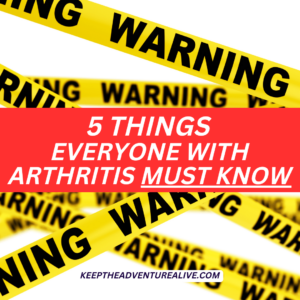Is the worry of joint pain after flying or long travel times holding you back from going on your next trip? With osteoarthritis, joint stiffness can be one of the most frustrating symptoms, especially when you have to sit for prolonged times with limited opportunity to stretch. It can make getting up and walking very difficult once you reach your destination. There are 5 remedies you can use to prevent stiffness on an airplane so you can take that trip you have been longing to take!
This article may contain affiliate links that give us a small commission if purchases are made through the links at no extra charge to you.
When sitting in the same position for >30-60 minutes, joint stiffness can become a real problem if you have osteoarthritis. So you can see why an airplane may present some difficulty.
Having to hobble off the plane with increased pain doesn’t sound the most appealing…
But what if there was a way you could keep stiffness at bay so that you can enjoy your time and keep up with the rest of your group to baggage claim?
The good thing is the 5 things I am going to share with you are relatively simple to do but can bring a world of difference when it comes to arthritic joints.


Preventing joint pain after flying
One of the best ways to prevent joint pain after flying is to make sure you keep stiffness under control. Joint stiffness can increase joint friction which can lead to more pain. Your legs may also feel very heavy when walking which can make getting around difficult.
Here are 5 things you can do when on an airplane to keep osteoarthritis pain and stiffness at bay.
1. Foot movement
I know, I know, there isn’t much room to move on an airplane. But, there are some creative ways to keep your joints moving.
Movement is incredibly important when it comes to preventing excessive joint stiffness. Your muscles act as pumps to help blood flow which it turn can keep those inflammatory cells moving. The goal is to avoid those inflammatory cells from residing in places they shouldn’t be.
These cells love when you don’t move. They get to nestle in and get comfortable- making your joints feel like cement blocks. This can lead to joint pain after flying due to the increased friction these cells can cause.
The most important joints to move are your feet and ankles. This is because with gravity, most fluid in your body is pulled down into your feet. This is why swollen ankles can be a problem after a flight.
Especially if you are at risk for blood clots, you don’t particularly want blood and fluid pooling in your calf.
One of the easiest ways to move your feet and ankles is to do a simple heel raise + toe raise in a sitting position. This helps work your calf muscles and pump the fluid out of your lower legs.
Another way to get creative with this is to change the position of your feet. If you point your toes out and bring your heels together, this is another way to complete a heel + toe raise as it will work some different muscles. You can also try to point your toes together and take your heels apart but this position can be a little more difficult depending on your mobility.
Complete 10-15 reps of these every 15-30 minutes. If you have a higher risk for blood clots or have quick onset joint stiffness, the more frequent you are moving, the better.
See an example on instagram here.
2. Changing leg positions
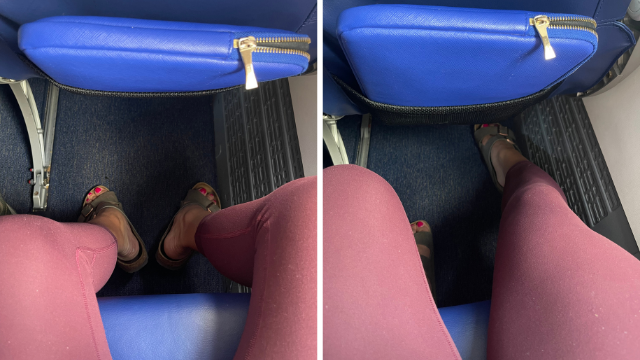
If you have the option to put your bag up in the overhead bin, I usually recommend doing so to increase the leg room that you have.
If you sit for a prolonged period of time with your legs in the same exact position, it is likely your knees and hips will feel stiff. Ideally, changing leg position at least every 30 minutes can help to reduce stiffness.
For example, if you switch from straightening to bending your legs, your knees will probably feel so much better. You can even take it into an exercise of simple straightening and bending repeatedly for a few repetitions.
Make use of the room you have in front of you as much as possible to prevent joint pain after flying.
Here is an example of a follow along seated exercise video that can give you some other ideas.
3. Compression socks
With a history of ankle swelling and/or blood clots, you might already have compression socks from a doctor. Compression socks can also help with joint stiffness and joint pain after flying too.
A compression sock is a fairly tight sock that comes in a range of lengths from above the knee to above the ankle. This sock helps to reduce the amount of fluid that is allowed to collect in your lower leg(s) and helps to pump it back to the rest of the body.
You can get compression socks over the counter, they don’t need to be prescribed. Here is my favorite pair you can order from Amazon. Sometimes, these socks can be really tough to get on but this pair is usually a little easier.
It is very common to wear compression socks on airplanes due to the significant effect of gravity and the limited opportunity for getting up and walking around.
There are some that also go above the knee which can help with knee swelling as well if you experience that during a flight as well.
4. Pre flight warm up
Now, you may get a few weird looks but doing a pre-flight warm up can totally be worth it. Adding some simple movements and stretches, preferably in standing can help to keep your blood flowing and reduce the risk of severe joint stiffness.
I like to think about doing movements that help to work muscles that you aren’t able to work when sitting. For example, moving both sideways and/or backwards can help to activate the hip muscles that you are usually sitting on aka your glutes.
You could simply step side to side or take forward and backward steps to use this muscles. You can also kick sideways or backwards while holding onto something. I recommend doing about 20-30 repetitions each direction or until you feel muscle fatigue.
You can also move your joints through ranges of motion you cannot do when sitting. For example, standing and bending your heel backwards towards your bottom or sitting in a figure 4 position are helpful, permitting your mobility.
Even if you only have a few minutes, try to stand and move in different ways. The more muscle movement you can get, the better.
If you are looking for some other ideas for arthritis friendly movement, head to the free 3 day Walking Workout Challenge that is jam packed full of different movements that will make your joints feel good.
Here is an example of a lower body warm up you can use.
5. Avoiding salty, inflammatory snacks
Trust me, I love the Southwest chex mix just as much as the next person. But it’s always kind of shocking how airlines tend to give out the saltiest snacks to it’s sedentary passengers!
I could really get behind passing out fruit or something else of actual nutritional value but for now, we have to make due.
Packing healthier snack options ahead of time can help to keep joint stiffness at bay. Salt makes it much easier to retain water which can lead to swelling and/or stiffness.
If you already know that you are sensitive to certain foods or respond fairly significantly to salt- pack ahead so you aren’t tempted.
Staying hydrated is also very important as long as you aren’t on specific fluid restrictions for another condition.
Dehydration can lead to increased blood pressure, fatigue, and other adverse symptoms you likely do not want to experience on a flight.
Conclusion
It is possible to fly and adventure with osteoarthritis. Knowing the best ways to reduce pain and stiffness are key, especially when in situations that make movement difficult.
Keeping stiffness and swelling at bay during a flight makes walking to baggage claim and standing and waiting more tolerable. It can also help to reduce joint pain after flying.
I know there isn’t much space but these 5 ways are the best ways to get creative so you can make the best of it.
The muscle strength you are able to build beforehand also will help you feel more limber and more mobile!
If you want to read next how to prepare your knees to walk longer distances, head to this article.
Planning a trip soon?
The best way to prepare for a trip if you have osteoarthritis is to make sure you are strong, well balanced for those uneven surfaces, and have stamina to keep up with everyone else.
Finding the best ways to do this without flaring up your joint pain can be really difficult to do. Luckily, I have created a step by step process for you to follow to help you adventure. You will learn the best ways to tackle stairs, to reduce pain and inflammation, what foods to eat, and strengthening movements that are proven to work.
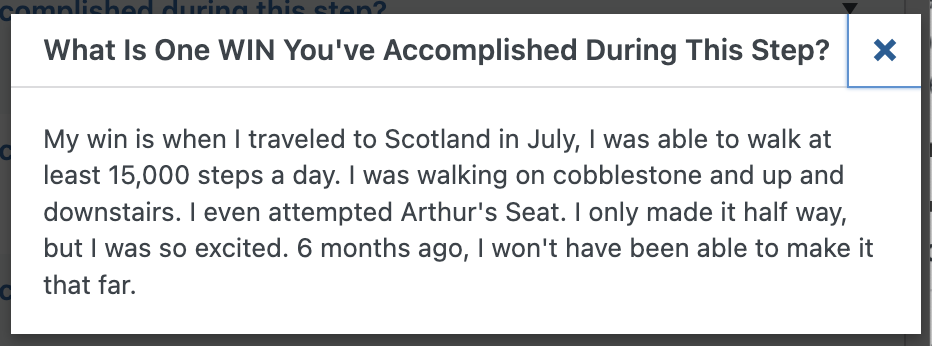
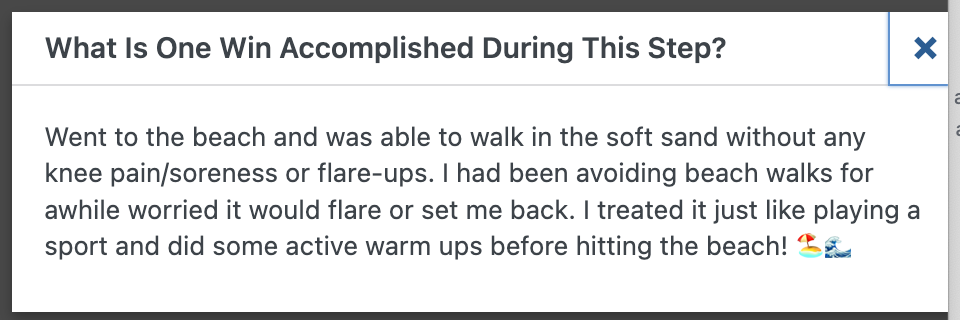
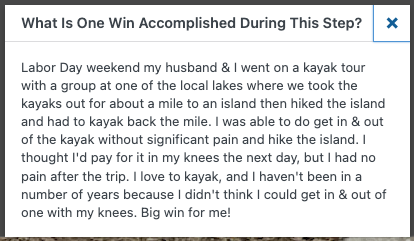
This step by step process has worked for hundreds of people with knee, hip, back, and ankle osteoarthritis and can help you bring adventure to life. Join in on the signature membership and become an adventurer for life.
Learn more about the Adventurers for Life membership here.
Alyssa Kuhn
Disclaimer: This post is for general informational purposes only. It should not be used to self-diagnose and it is not a substitute for a medical exam, cure, treatment, diagnosis, and prescription or recommendation. It does not create a doctor-patient relationship between Dr. Kuhn and you. You should not make any change in your health regimen or diet before first consulting a physician and obtaining a medical exam, diagnosis, and recommendation. Move Well Age Well, LLC and Dr. Alyssa Kuhn, PT, DPT are not liable or responsible for any advice, course of treatment, diagnosis or any conclusions drawn, services or product you obtain through this post, video or site.

If you are looking to regain your active life but are unsure where to start, join the revolutionary membership, Adventurers for Life. This is a step-by-step path that not only will help you find pain relief but will help you unlock adventure. You’ll get workouts, tests to pass to make sure you are on the right track, community events and MORE.

